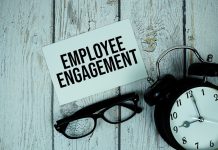By Stephen Monk, Director, PwC Advisory People and Change
Successful organizations recognize the strategic advantage of increasing employee value over time and the subsequent benefits for both the enterprise and individual development. Transferring capability to build competence and commitment is key in helping people be more productive and agile in hopes of sustaining their value over the long term.
Because organizations know the majority of learning occurs on the job, they recognize coaching as one of the key levers in transferring capability.Those assigned as “coaches” often are so designated because of their experience, their role in the organization, and/or their expertise in a particular subject. Many coaches understand their job is to inform, educate, or “up skill”—sharing the depth and breadth of their experience using approaches that make sense to them and align with the way they like to learn and/or have learned in the past. While the value of coaching from the perspective of the learner is understood at an intellectual level, it is often challenging to put into practice. Too often, coaches default to sharing information or demonstrating skills using methods that mirror their own learning preference or style—which may or may not be aligned to the way in which their coachees learn most effectively.
It is important for the coach to focus on the coachee’s learning style early in the relationship and find alternate ways to continually engage the learner. To support these principles of effective coaching, an organizing framework will help drive an intentional progression to the coaching relationship. The goal of this framework, or approach, is to develop and sustain a coaching relationship that enhances personal and organizational value. This involves six steps:
1. Determine the context for the coaching assignment.
- Prior to agreeing to a coaching assignment, be clear about the expectations set for you as the coach. Know the parameters of the assignment—the specific area of knowledge or skill, the amount of time required, and expected outcomes.
- If your coachee is outside your area of responsibility, clarify your coaching role with your coachee’s manager. This is also a good opportunity to obtain information on your coachee and should include a discussion of any performance matters that may relate to the coaching assignment.
2. Establish the coaching partnership.
- Review your coachee’s background. This due diligence should include previous training, competencies, certifications, performance review data, and current and future goals. This effort helps to build the foundation for a trust-based relationship and allows for more targeted coaching.
- Meet with your coachee, face to face if possible. This initial meeting sets the tone for the relationship and serves as an initial assessment of capabilities and goals, learning styles, and level of confidence. It is also an opportunity to discuss how you will work together and to set ground rules for your coaching relationship.
3. Create the coaching plan.
- Based on your learnings in Step 1, as well as the initial meeting with your coachee, identify a learning “project” and create a learning plan, including milestones and roles and responsibilities. Be sure it is realistic, “stretches” your coachee, and is business focused.
- Agree on the duration of the learning project, key assignments where learning can occur, and interim measures of success in the event course corrections are needed.
4. Coach and be a thinking partner.
- Throughout the coaching partnership, review the impact of your approach; remember, the intent of your coaching is to reduce your coachee’s time to value and increase his/her value over time. Check in periodically with your coachee for his/her feedback and adjust your approach as required. While each person has a preferred learning style, this style may shift based on prior experience and/or the particular task.
- Consider yourself a thinking partner. Your job as a coach is not to provide all the answers all the time. Rather, your responsibility is to help your coachee think and act independently—thus enhancing value to the individual and the organization. Being intentional about asking questions and soliciting opinions and points of view allows you to determine how your coachee is thinking and processing information.
5. Assess results.
- Review the learning process and results. It’s important to review both the coaching process and the results that were achieved. Both the coachee and the organization must benefit from the coaching in order for the effort to be successful.
- Take time to reflect. A key principle of adult learning is to allow time and space for both action andreflection. Reflecting on lessons learned and feedback from your coachee and peers allows you to continue to refine your coaching approach.
6. Identify next steps and share key learnings
- Leverage the outcomes of your coaching activities and results across the broader organization by capturing and sharing leading practices. You often can use the same or similar approaches with other coaches, and there may be other coaches who can gain insights from your experience.
- Create a coaching community of practice (COP). A COP is a useful vehicle tobegin to build a coaching culture within an organization by extending the coaching network. It also can lend credibility to the coaching function and formalize the coaching role and responsibilities.
Development of human capital, with a focus on reducing time to value and maximizing value over time, is a strategic differentiator. Organizations fraught with high turnover, a substantial retiring population, and those where people move quickly from position to position are particularly at risk. For these companies, transfer of capability is critical.
Developing a coachee-centric coaching approach will help ensure skills and knowledge are transferred back into an organization effectively and efficiently. Successful coaches know that understanding their coachees’ learning style, and then matching their approach accordingly, yields the best results—both for the individual and the organization. While learning is a shared responsibility, it is incumbent on the coach to focus on the learner and how he/she will be most successful.
Stephen Monk is director, PwC Advisory People and Change.PricewaterhouseCoopers LLP is a Delaware limited liability partnership. All rights reserved. PwC refers to the US member firm, and may sometimes refer to the PwC network. Each member firm is a separate legal entity. See http://www.pwc.com/structure for further details. This content is for general information purposes only, and should not be used as a substitute for consultation with professional advisors.




